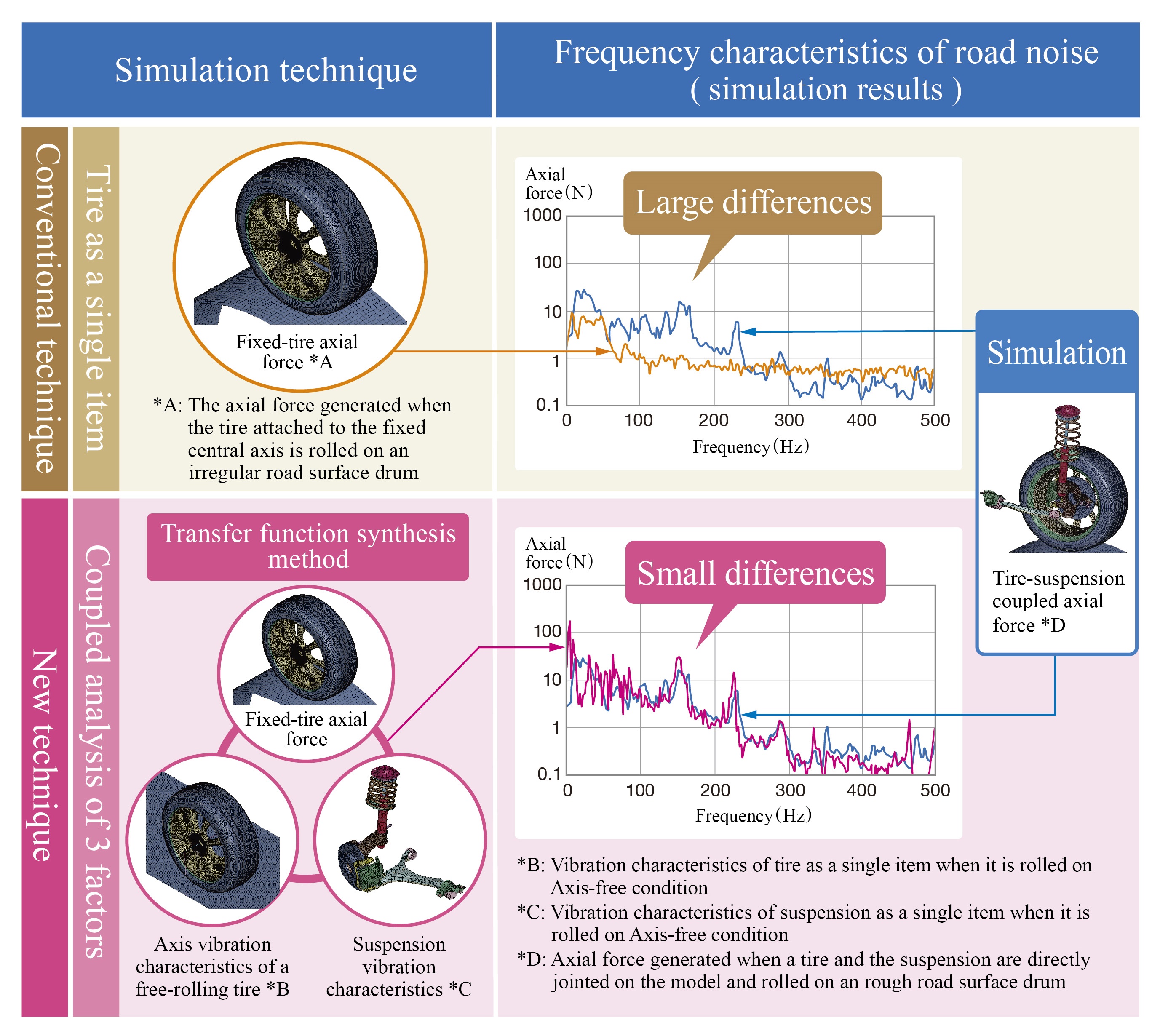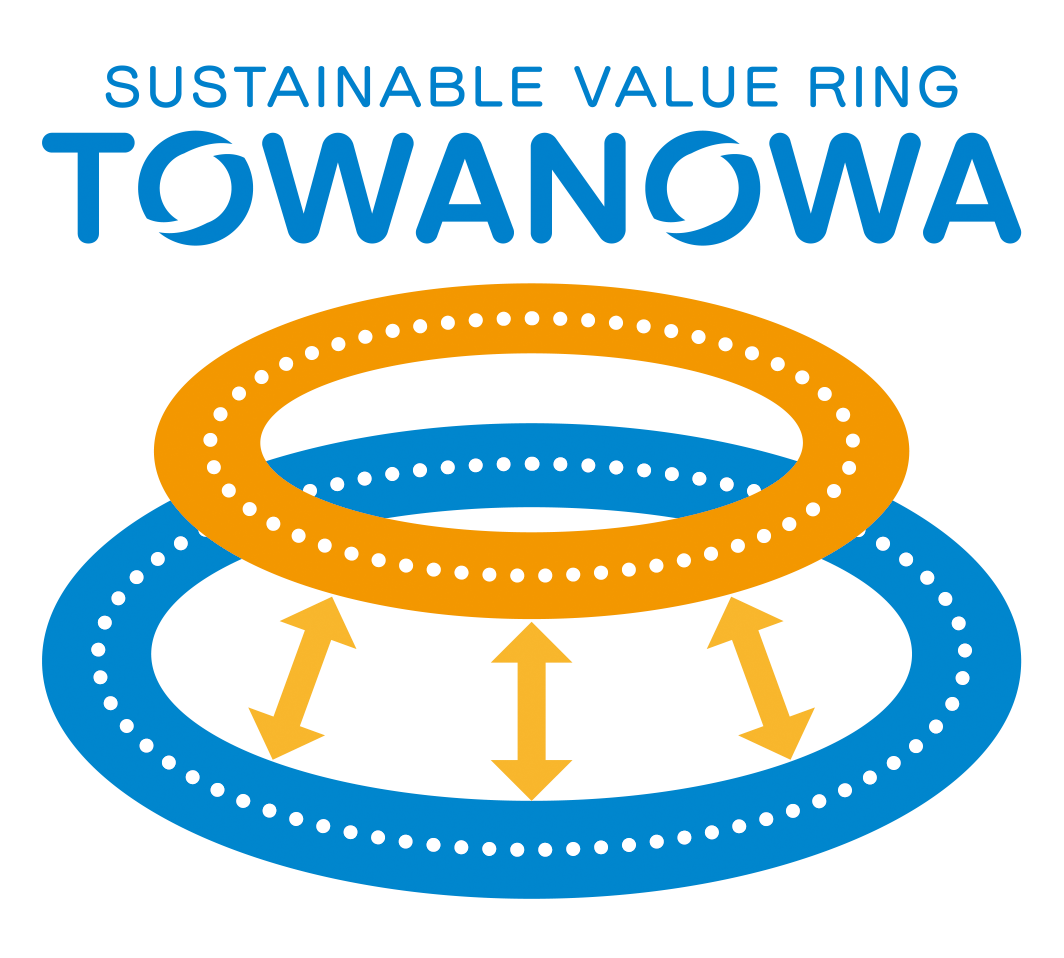Michelin Names Matthew Cabe as President and CEO of Michelin North America
Michelin has named Matthew Cabe as president and CEO of Michelin North America, effective…
Poursuivre la lecture
Juin 12, 2024
Sumitomo Rubber Industries, Ltd. is pleased to announce that it has developed a new technique for predicting noise generated by the combined vibration of the tires and vehicle. In developing this technique, we used a tire rolling motion simulation that assumes tires of a moving vehicle. Applying the new method will enable both tire and vehicle manufacturers to reduce noise generated by their products. Reducing noise in a vehicle is expected to enhance passenger comfort while the new technique will shorten delivery time by cutting development manhours and save resources by reducing physical prototypes. We will draw on this process to promptly respond to various user needs, including the model-based development*1 of tires and vehicles and to pursue more environmentally friendly tire development.

Comparison of simulation results between conventional method and new technique
Road noise*2, generated when a stimulus from road surface irregularity is transmitted to the vehicle through the tires while the vehicle is traveling, is one of the crucial factors that determine passenger comfort. EVs, which are expected to spread going forward, generate no engine sound which makes road noise more noticeable. This means the reduction of road noise more important than before.
Various standalone tire simulation techniques have been used in the past to reduce roadway noise. It was difficult to predict, however, the performance of the vehicle/tire combination as the noise generated is through coupling of the tire and vehicle.
More recently, we have developed a technique for predicting roadway noise generated through the coupling between the tire and the vehicle, by combining the performance of the tire alone and that of the vehicle alone using the transfer function synthesis method*3. This technique made it possible for the first time to use a simulation to assess the axis vibration characteristics of a free-rolling tire (*B in the figure above) with the tire rolling, which are difficult to assess experimentally. In addition, from a comparison of the axis vibration characteristics of a stationary with a rolling tire, we confirmed that there are differences in vibration characteristics due to gyro effect*4 and other factors. This confirmed the validity of using the transfer function synthesis method in the state in which the tire is rolling. The contents of this study were presented as “Development of Operational Tire-Suspension Contact Force Analysis using Frequency based Substructuring” at the 2023 JSAE (Society of Automotive Engineers of Japan, Inc.) Annual Congress (Autum), with the patent necessary for the simulation pending (Kokai (Japanese Unexamined Patent Publication) No. 2022-37666).
The establishment of this technique makes it possible to predict road noise performance in a simplified manner by coupling the vibration characteristics of the tire and the vehicle using the transfer function. The transfer function is more commonly available than sensitive vehicle information. Additionally, this technique can reduce the number of tests with an actual vehicle with prototype tires and is expected to shorten development while using less resource.
We will leverage the “Tire Aerodynamic Simulation*5,” which is effective in reducing the electricity consumption of EVs, and this new noise simulation technique in tire development to promptly respond to a variety of ever-changing user needs These include EV tires, advanced tires and model-based development. In addition, we will further environmentally friendly tire development through effective use of resources.
We unveiled our own unique Circular Economy Concept for the Tire Industry, which we call TOWANOWA*6, in March 2023. TOWANOWA features a two-ring structure, with a “Sustainable Ring” consisting of five processes in the value chain and a “Data Ring” linking big data collected from each process. We aim to provide new value by sharing / using data between the two rings.
 In the development of this simulation technique, the utilization of data obtained through the “Planning & Design” process enables development with improved noise performance, which will enhance tire performance while reducing required resources.
In the development of this simulation technique, the utilization of data obtained through the “Planning & Design” process enables development with improved noise performance, which will enhance tire performance while reducing required resources.
Through TOWANOWA, the Sumitomo Rubber Group will further accelerate our efforts to promote and practice ESG Management, and contribute to the achievement of carbon neutrality by 2050 and the development of a sustainable society.
L'Association canadienne du pneu et du caoutchouc
5409 Eglinton Ave W, Suite 208
Etobicoke, ON M9C 5K6
Tel: (437) 880-8420
Email: [email protected]